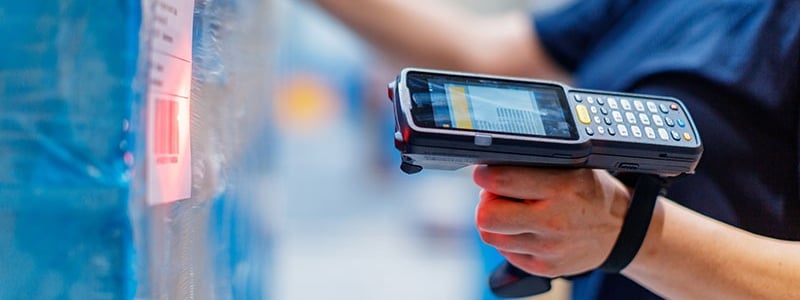Securing Productivity in Supply Chains
Mobile device management – it’s been part of your operational technology portfolio for a long time. You’ve been using it for years – or maybe decades – to stage device configurations, push software updates and more.
You might be using our Ivanti Avalanche MDM solution to manage your rugged mobile deployments. The device, OS and app management capabilities remain at the center of your mobility management program, and that isn’t going to change. What is changing is the prioritization of security as part of MDM.
Mobility as a threat vector
Mobile devices are a threat vector that has been on the rise in recent years. According to the 2022 edition of Verizon’s Mobile Security Index, 45% of surveyed companies said they suffered an incident, resulting in data loss, downtime or other negative outcome involving a mobile device.
The report further explains that 53% of respondents acknowledged that mobile devices have access to more sensitive data than they did one year ago.
Bringing down the house
You don’t need to look hard to read recent headlines about these types of attacks. A retailer breached by a threat actor who entered via the HVAC system was early evidence of third-party risk exposure. The breach of a pipeline operator in 2021 highlighted the risks to critical infrastructure. Unfortunately, there are countless examples out there.
Enterprise mobility risks includes users carrying all kinds of devices, like smartphones, commercial tablets and rugged mobile devices. Plus, there are also users with mobile point of sale (POS) tablets.
All these devices connect to your business’ critical infrastructure. A software update that isn’t deployed could leave the door open for a threat actor to steal gigabytes of customer data from your CRM system or ransom your warehouse management system, bringing your operations to a halt.
Now, what should you do to increase prevention and resilience in your operations?
Mobile security and device management
Be sure your mobile security strategy includes these protections, and consider how they are addressed on diverse types of mobile endpoints across your organization:
- Know what you have. You can’t protect what you can’t see. It may be easier to account for your corporate purchased rugged mobile computers (including spares!) and even corporate-owned, personally enabled (COPE) devices. You also need to see, secure and manage any bring your own device allowed into your ecosystem with a cloud-based platform like Ivanti Neurons for MDM.
- Patch efficiently. Yes, patching is both a difficult and manual process – but it’s important. You need visibility to the vulnerabilities across your estate to update operating systems and third-party app software. And don’t discount device firmware.
- Don’t disturb the user experience. Device security and management should be virtually invisible to the end user. You don’t need a retail sale stalled or a warehouse order delayed while a device update happens.
- Validation has value. Android Enterprise Recommended MDM solutions are required to meet specific standards for user experience and performance – a nod to your operational tech administrators as well.
- Protect against the latest threats. Optimized threat prevention includes protecting against known and zero day threats. Adding Ivanti Mobile Threat Defense, part of our MobileIron heritage, adds real-time intelligence to help you detect malicious apps.
Protecting productivity
You work hard to be sure your rugged devices and wearables in mission-critical operations are ready for daily use. Making sure security is covered manages another risk, so you can focus on ensuring your workers deliver on KPIs.
To dive deeper, sign up for our webinar and let us show you how Android Enterprise Recommended MDM and mobile security work together to keep your mobile deployments secure, available and accessible.

